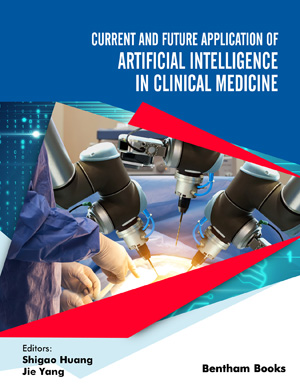Abstract
Purpose: The aim of the study was to investigate the feasibility of discriminating between clear-cell renal cell carcinoma (ccRCC) and non-clear-cell renal cell carcinoma (non-ccRCC) via radiomics models and nomogram.
Methods: The retrospective study included 147 patients (ccRCC=100, non-ccRCC=47) who underwent enhanced CT before surgery. CT images of the corticomedullary phase (CMP) were collected and features from the images were extracted. The data were randomly grouped into training and validation sets according to 7:3, and then the training set was normalized to extract the normalization rule for the training set, and then the rule was applied to the validation set. First, the T-test, T'-test or Wilcoxon rank-sum test were executed in the training set data to keep the statistically different parameters, and then the optimal features were picked based on the least absolute shrinkage and selection operator (LASSO) algorithm. Five machine learning (ML) models were trained to differentiate ccRCC from noccRCC, rad+cli nomogram was constructed based on clinical factors and radscore (radiomics score), and the performance of the classifier was mainly measured by area under the curve (AUC), accuracy, sensitivity, specificity, and F1. Finally, the ROC curves and radar plots were plotted according to the five performance parameters.
Results: 1130 radiomics features were extracted, there were 736 radiomics features with statistical differences were obtained, and 4 features were finally selected after the LASSO algorithm. In the validation set of this study, three of the five ML models (logistic regression, random forest and support vector machine) had excellent performance (AUC 0.9-1.0) and two models (adaptive boosting and decision tree) had good performance (AUC 0.7-0.9), all with accuracy ≥ 0.800. The rad+cli nomogram performance was found excellent in both the training set (AUC = 0.982,0.963-1.000, accuracy=0.941) and the validation set (AUC = 0.949,0.885-1.000, accuracy=0.911). The random forest model with perfect performance (AUC = 1, accuracy=1) was found superior compared to the model performance in the training set. The rad+cli nomogram model prevailed in the comparison of the model's performance in the validation set.
Conclusion: The ML models and nomogram can be used to identify the relatively common pathological subtypes in clinic and provide some reference for clinicians.
Keywords: Radiomics, computed tomography, machine learning, nomogram, clinicians, ccRCC.
[http://dx.doi.org/10.1016/j.ejca.2011.11.036] [PMID: 22257792]
[http://dx.doi.org/10.1016/j.mri.2012.06.010] [PMID: 22898692]
[http://dx.doi.org/10.2214/AJR.20.22823] [PMID: 33852332]
[http://dx.doi.org/10.2214/AJR.21.25456] [PMID: 33852355]
[http://dx.doi.org/10.1148/radiol.2020191145]
[http://dx.doi.org/10.1038/nrclinonc.2017.141] [PMID: 28975929]
[http://dx.doi.org/10.1158/0008-5472.CAN-17-0339] [PMID: 29092951]
[http://dx.doi.org/10.1038/nrdp.2017.9] [PMID: 28276433]
[http://dx.doi.org/10.1016/j.eururo.2022.03.006]
[http://dx.doi.org/10.3109/21681805.2013.864698] [PMID: 24666102]
[http://dx.doi.org/10.1097/00000478-200305000-00005] [PMID: 12717246]
[http://dx.doi.org/10.1016/j.ejrad.2018.08.014] [PMID: 30292260]
[http://dx.doi.org/10.1007/s10278-019-00230-2]
[http://dx.doi.org/10.1007/s00330-018-5872-6]
[http://dx.doi.org/10.1007/s00330-021-08353-3]
[http://dx.doi.org/10.1007/s11547-020-01169-z]
[http://dx.doi.org/10.1016/j.ejrad.2018.10.005] [PMID: 30527316]
[http://dx.doi.org/10.1007/s10278-020-00336-y] [PMID: 32314070]
[http://dx.doi.org/10.1002/sam.11196] [PMID: 24501613]
[http://dx.doi.org/10.1007/978-3-540-30115-8_34]
[http://dx.doi.org/10.1093/bioinformatics/btn356]
[http://dx.doi.org/10.1007/s00415-020-09713-7] [PMID: 32008072]
[http://dx.doi.org/10.1111/j.1464-410X.2010.09569.x] [PMID: 20804487]
[http://dx.doi.org/10.1016/j.juro.2009.04.013]
[http://dx.doi.org/10.1080/14737140.2019.1574574] [PMID: 30678509]
[http://dx.doi.org/10.2214/AJR.04.1408] [PMID: 16632740]
[http://dx.doi.org/10.1111/iju.12231]
[http://dx.doi.org/10.1136/jcp.2006.044438] [PMID: 17557864]
[http://dx.doi.org/10.1177/0284185115585035] [PMID: 25972369]
















